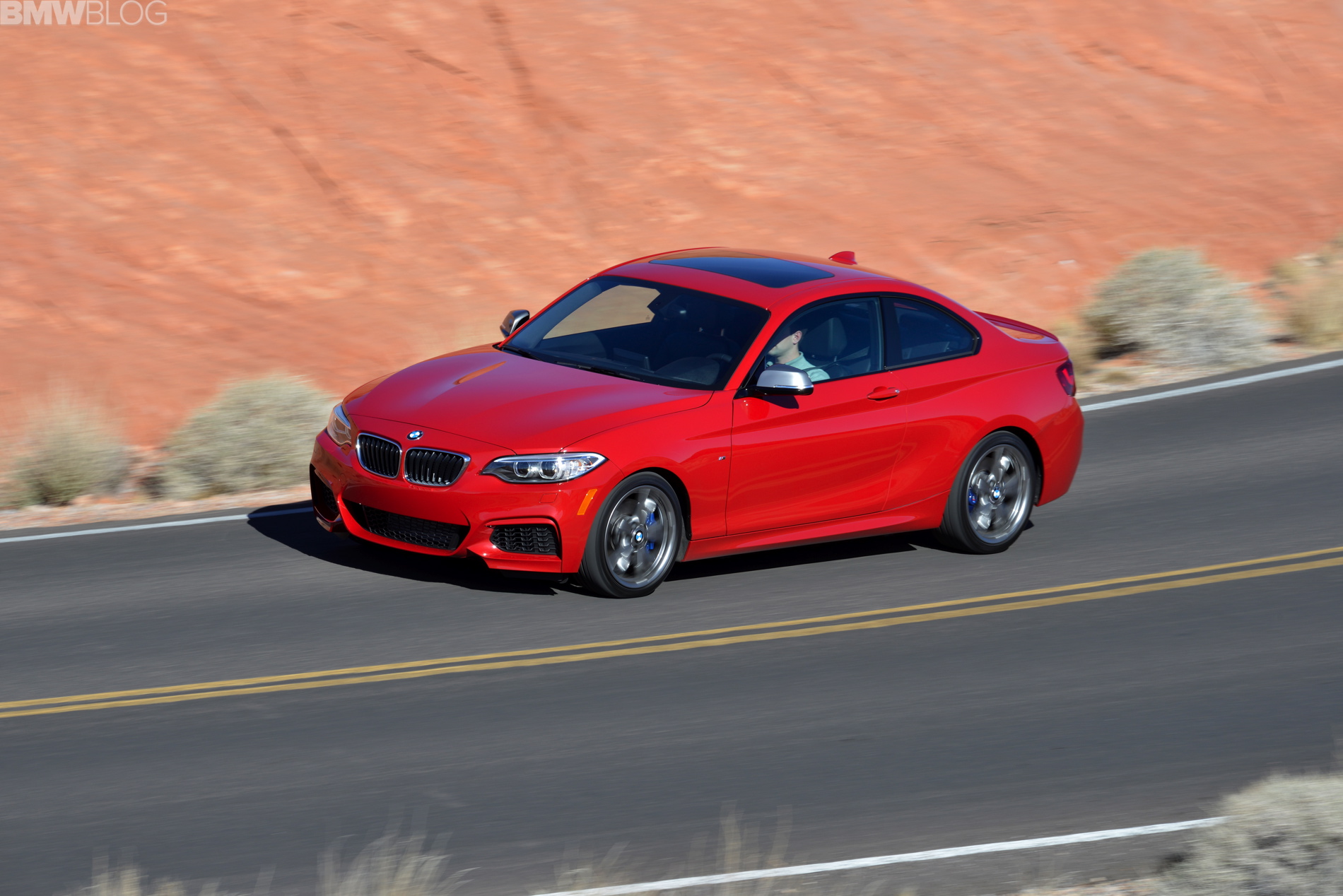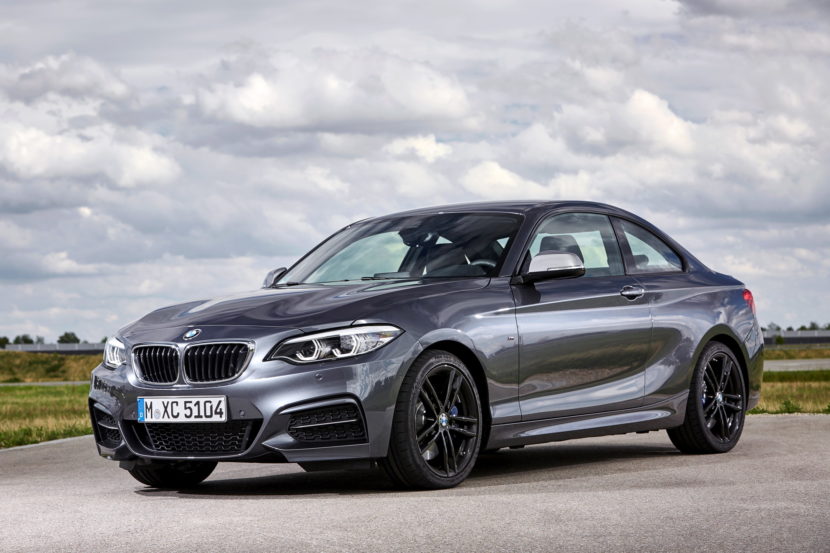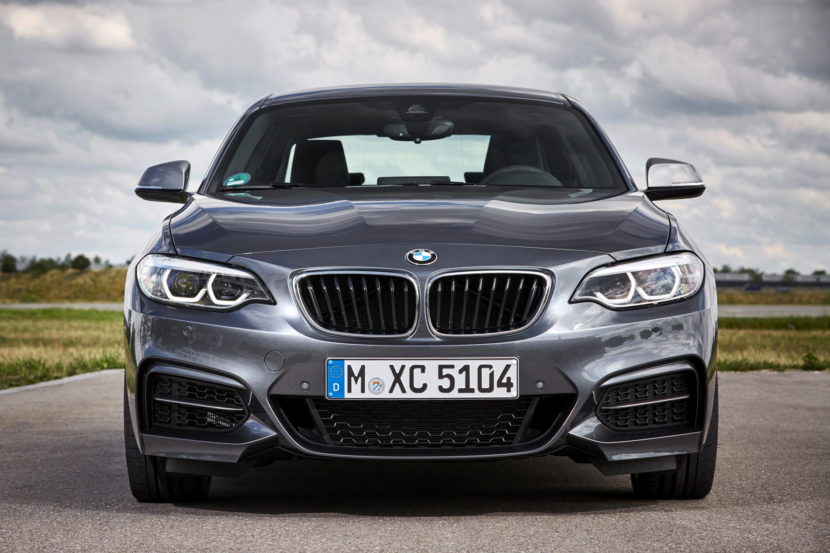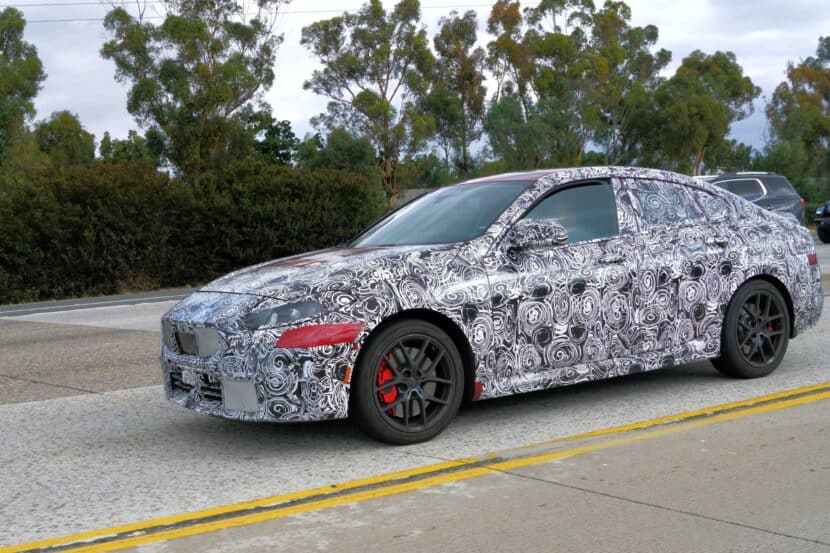With the newest BMW 2 Series just entering production, the last generation just got a little bit more affordable. With the earliest of these dating back to 2014, and a depreciation curve that’s as predictable as it is steep, the BMW 2 Series F22 (and high-performance brother F87 M2) has become one of the best fun-to-drive bargains available. Plus, with the 3 Series and 4 Series steadily becoming more and more bloated, the BMW 2 Series F22 has become the contemporary choice for a modern sports coupe. In this article, we dive into the buyer’s guide for the BMW 2 Series F22 generation.
Engine and Performance Options
The BMW 2 Series F22 debuted with two engine choices: a turbocharged four-cylinder (N20) for the BMW 228i and a turbocharged inline six-cylinder (N55) for the BMW M235i. Both choices were already well into their production cycles, having been found in vehicles as early as 2011. They’re good for 241 horsepower and 322 horsepower, respectively. But it got even better than that – post 2016, they got totally different powerplants, along with bigger badges.
The newly designated BMW 230i got bumped up to the 248 horsepower B48, and the M240i received the now-ubiquitous B58 engine, at a likely-underrated 335 horsepower. Like most turbocharged engines, they’re both hugely responsive to a few choice modifications. All variants had the choice of either a six-speed manual, or a responsive (and now familiar) ZF-sourced eight-speed automatic.
The M variant of the 2 Series changed a bit over the years too, but it all began with a slightly tweaked N55 – the “same” engine as the M235i. It made a bit more power, 365 horsepower, and got an optional dual-clutch transmission, lifted from M3 of the day. The M-DCT in the M2 is a little bit faster and more aggressive than the ZF8, but it’s a little less daily-driver friendly. The S55 powered M2, most easily distinguishable by its massive brakes, more aggressive seats, and the giant carbon fiber strut brace under the hood, is good for 405 horsepower with the same transmission choices.
And of course, the BMW M2 CS exists above that, with the same powerplant but a bit more power and even more bespoke parts. Chances are, if you’re in the market for an M2 CS, you didn’t need to read this buyer’s guide.
Behind the Driver’s Seat
Despite the myriad of powertrain choices, all 2 Series share one thing in common: they’re a great driver’s car. The lightest N20 equipped 228i weighs in close to 3300 pounds, which isn’t terribly heavy by modern standards. For reference, the 2022 M240xi tips the scales closer to 3800 pounds. And while the power might mask a bit of the weight on the newer M240, there’s still a nimbleness that cannot be replaced. With the 228i and 230i F22s, I’ll admit – you’ll want to invest in some good suspension and better tires at the minimum to get the most engaging drive. And simply put, they won’t be winning many races – they’ll be “quicker than I expected”, but never “quick enough”. But as a daily driver and casual weekend canyon carver, they’re great out of the box – and that’s where they shine.
The M235i and M240i of this vintage are downright fast – the 240i will pull you from 0-60 in around 4 seconds, with or without xDrive. Plus, they’re all mostly well-equipped from the factory – so you won’t have to worry about your fun little sports coupe coming without power front seats, if that kind of thing matters to you. Suspension, brakes, and wheels are all upgraded from the factory, but that might not matter if you plan on changing them anyway. Overall, the big-engined F22s drive very similar to the smaller engine, M-Sport equipped 228i and 230i – just with oodles more power and a bit more heft. Prioritize as you see fit.
If you’re willing to pay to play, and need the most engaging 2 Series out there, you’ll need the M2. The N55-powered car is still a significant departure from the M235i, as the car is mostly ground-up newness. It’s an incremental change in the straights, being only slightly quicker in a straight line. But the BMW M bits will really help in the corners – if you weren’t already planning on changing them. The S55-powered M2 Competition and CS both up the ante again, but you’re upping your budget considerably. They’ll get you the most performance both stock and modified, and have the most communicative and well-tuned steering, but both ride much stiffer and aren’t the most daily-driver friendly.
What to Watch For
Early N20 cars (228i) suffer from the notorious timing chain and tensioner issue. Other than that, the little engine 2 Series don’t have many systemic problems. The typical turbocharged BMW issues will likely eventually crop up on the B48s, but there’s nothing inevitable and catastrophic. With higher mile cars especially, Inspect for the usual BMW suspects (oil and coolant leaks, injectors, plugs).
The N55 was in its end of production around this time, and in both the M235i and M2 it provides middling reliability. They suffer from the awfully designed, flimsy plastic charge pipe that will inevitably fail. And valve covers tend to leak a lot more here than on the other engine choices. Water pumps are common eventual failures here as well. In reality, the N55 isn’t all that unreliable – it just isn’t the most stalwart of your options. A pre-purchase inspection is highly recommended if you’re looking at either N55 car – the M235i or the M2. Their overall affordability and popularity among enthusiasts makes all the N55 cars a frequent choice for modifications – sometimes of questionable quality. So buying a stock one or two owner example might be a good idea.
The S55 and B58 cars are the most reliable cars so far, with the additional benefits of many of them still being under warranty. While long term I expect the B58 to experience a lot of the same occasional failure most turbocharged BMWs see, currently there isn’t much to talk about here. Check for modifications and leaks; but generally low mile B58 2 Series enjoy reliability. The S55 cars are even better; other than the crank hub issue which is primarily a concern on modified cars, there isn’t a single “common issue” to speak of. That being said, the S55’s parts are sometimes considerably more expensive than their non-M counterparts, so be aware that the cost to maintain those cars out of warranty will be a bit higher.
Should I Buy One?
Having owned both N55 and S55 cars, I can personally attest that each one does different things better. The N55 cars are true Swiss army knives – a fantastic daily, the DIYers dream come true, or road trip hero. It all comes down to intended use and the modifications you choose to make. The S55 cars are rowdy – fast, fun, but a bit impractical on your morning commute if you’re dodging potholes and other drivers. They’ll engage you and feel every bit of their M-car heritage. Finally, the four-cylinder cars are perfect for a fun daily with no pretension of going anywhere terribly quickly. They also boast decent reliability and are more fun than nearly anything else available at their respective price point.
As the F22 and F87 2 Series age, it’s clear they’ve replaced the 3 Series as the entry-level enthusiast BMW. And why shouldn’t they? Lower weight, nimble handling, and great value make them occupy the exact space that a used 3 Series used to sit in only five or ten years ago.
No matter your budget or taste, there’s a 2 Series for you – go find one and enjoy!













































































